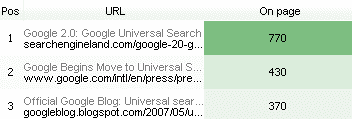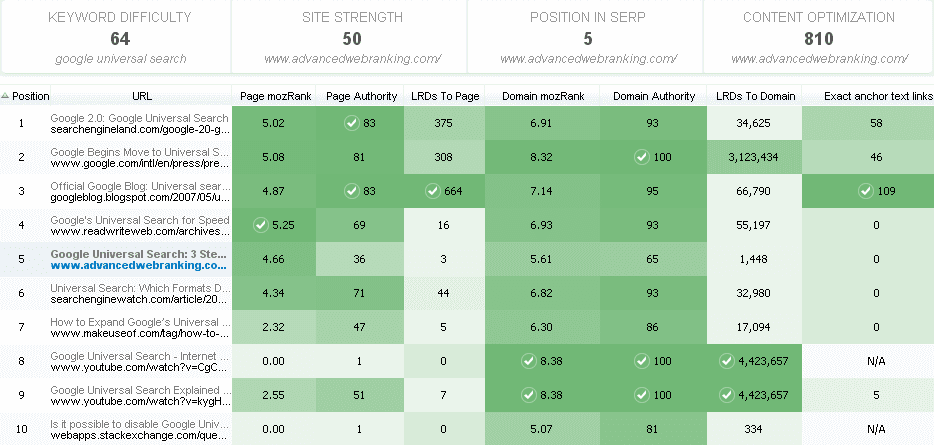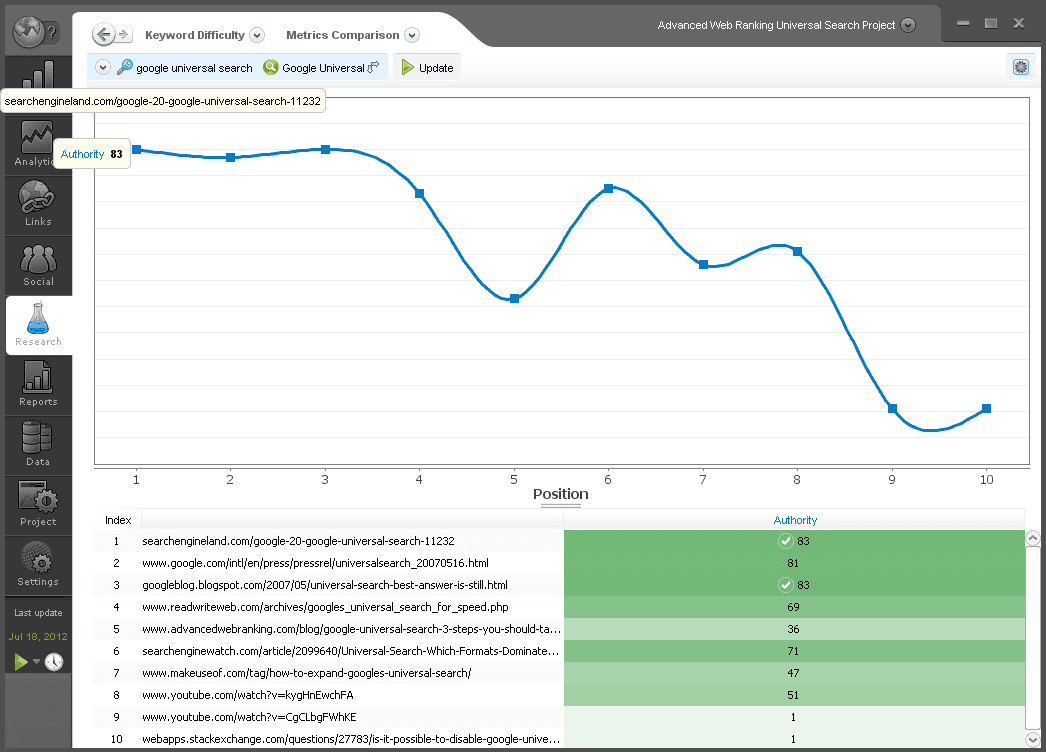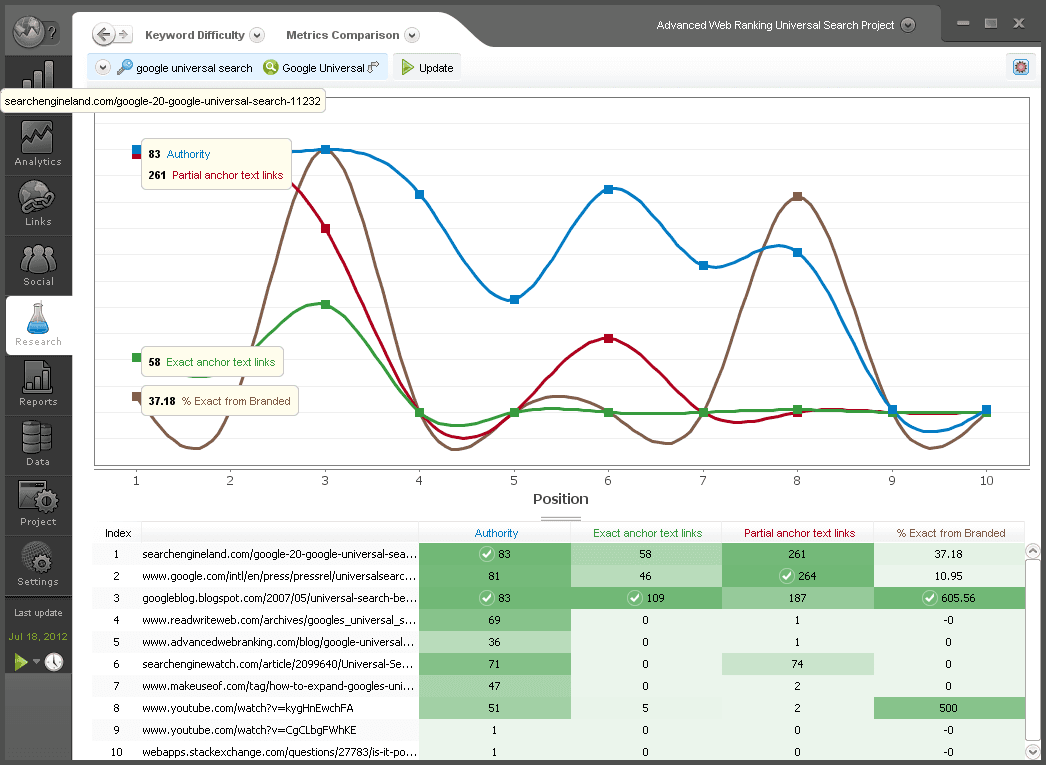
How To Create A Content Evaluation Matrix For Your Writers
Note: This article contains references to Advanced Web Ranking Desktop, a version that is no longer under active development.
With almost 7 billion pages online in July 2012, the battle for quality content is reaching new heights. Websites with poor writing no longer pay off, and this is not just because of Google's algorithm updates. Having so many pages to choose from, readers simply surf away from bad copy and develop a healthy appetite for quality.
This rush for high class content smoothly changes the rules of copywriting, turning professional writers from "nice to have" into a necessity . So, if you own a website (duh... of course you do), instead of wondering if the content your sales agent wrote on his coffee break is any good, you should start thinking about handling this task over to professionals.
But don't be hasty :). Before you go ahead and do the reassignment, there are a few things you need to be prepared for.
To produce relevant landing pages and articles, your professional writers will need to have a good understanding on what to write, how to write and for whom. In other words, they will require a dynamic system with the keywords, the competition, the audience's reactions and the internal evaluation criteria for the content they create.
Building up the matrix
There are 3 steps you need to take in creating the content evaluation matrix: decide on the targeted keywords, determine the metrics that you are going to use for evaluation and gather the information in a centralized framework.
Based on this system, you will be able to correctly determine priorities for your team of writers, according to the newest trends in the SERPs.
Let's take a look at each step and see together how the matrix begins to take shape. To illustrate the stages, I will use an example with the article that I've written for the Advanced Web Ranking Blog, about Google universal search.
1. Decide on the targeted keywords
Choosing the keywords that you will optimize for is a great challenge, considering the infinite number of terms and phrases combinations out there.
To start, you need to identify a set of primary terms that define your industry, your products and the services that you provide. Using this information, you can then proceed with a series of keyword research sessions, that will give you the relevant suggestions, the volume and the commercial values for your terms.
The keywords selected at this step will be entered into the matrix later on.
For the example that I've chosen, the keyword research sessions started with "google universal search" (this phrase defines a feature recently integrated in our software), and resulted in the selection of 9 keywords that I would need to further focus on.
Until these terms were ready to be entered in the matrix, they were stored temporarily in an Excel sheet. Here is how it looks like:

2. Determine the metrics that you are going to use for evaluation
Once the targeted keywords are selected, it's time to choose the metrics that will help the writers evaluate the competition and the content they produce. These quantifiers must be able to answer two questions:
"How difficult it is to compete for my keyword?"
Of course, this question comes before starting to write the content, and the answer is determined according to the analysis of the top 10 competitors for the selected keyword and search engine. With this information, the writers can start setting up the structures and SEO techniques for their pages.
"How efficient my new content is compared to my competition?"
When the fresh content is already published online, the answer to this question should point out its strengths and weaknesses. This can help the writers spot small corrections that they can bring to landing pages, or improvements they can implement for new articles they will write.
In selecting the quantifiers for your content evaluation matrix, the following types of signals should be taken into account:
Website metrics
These metrics indicate the authority of the domains and pages competing for your keywords, and also the current ranking positions they have on the search engine. This provides the writers with a clear image of the current situation in the SERPs: they can see what pages they will compete against and how strong these pages are.
Here are the site metrics that I used in the analysis made for "google universal search", on the top 3 competitors in Google.com.

Anchor text metrics
With these metrics, the writers can extract information on the links that point back to the domains and pages under analysis, containing the targeted term in exact/partial match anchor text.
For me, this is the most important set of quantifiers, because they show the best reflection of the link building optimization level on the competitor pages, for the keywords I am targeting. This way, I can make a fair estimation of my articles' chances to rank for those terms.
With recent changes in Google, analyzing the number of exact match links alone is not enough to unveil the strength of a web page. It's necessary to take into account metrics showing more in-depth information, like the percentage of exact / partial match anchor text links, and the percentage of exact match from branded anchor text links.
Below, I embedded some screenshots with the anchor text metrics that I used in the content evaluation matrix for this example:





Average links authority metrics
These metrics show the average authority values calculated for the domains and pages analyzed. Including them in the matrix is optional, because the main information is already there, with the links authority and anchor text distribution metrics. However, I like to use them because this way I can get a clearer picture on page authority and domain authority of the links that point back to my competitors with the targeted keyword in anchor text.
Here are the average links metrics that I used:

Social metrics
Many SEOs speak increasingly about the social signals' influence on search engine rankings. This trend can be easily seen in how much content is being promoted via social networks.
In the evaluation matrix that you are creating, the social shares will be the best way to measure the exposure and the audience's reaction to the new content, comparing the results to the competition.
Below I added a screenshot with the social metrics used for this example:

On Page optimization level
This quantifier is based on a set of on-page factors like title tags, meta tags, URL and HTML body optimization elements, that are deemed to help in search engine ranking.
When calculating the on-page optimization score, you need to make sure that all competitors are evaluated according to a centralized set of criteria, so that the comparison between the values obtained is relevant.
For the example I am using in this article, the on page score was calculated using the Content optimization tool in AWR:

That's about it with the quantifiers :) Remember that, when you'll choose the metrics for your content evaluation matrix, it's important to focus on the exact information that you expect to obtain. Each metric will be a signal for a certain perspective. So, if the signals you analyze are too few, there is a risk that your content strategy is based on partial information.
3. Gather the information in a centralized framework
Having all the keywords and the metrics at hand, it's time to enter them into the matrix and start gathering the information for your writers. This will help you create a competitive advantage in a dynamic environment, easily observing the strengths of your perennial and occasional competitors.
Although technically the data gathering process can be done with standalone tools, that retrieve rankings, links and social metrics separately, the effort you would need to centralize the data in Excel sheets is huge, both in terms of human resources and the time taken to perform the tasks. Also, a workflow with multiple tools would make it difficult to follow up on the newest trends coming from each data gathering session.
The solution for our content evaluation matrix is the Keyword Difficulty tool in AWR. This integrated tool already contains the necessary metrics, so I just needed to add the new keywords to our in-house SEO project.
Then I ran the first data updates for my keywords, checking the competitors. Following this analysis, I have selected 1 "core" keyword and 2 derivate keywords for the article: "google universal", "google universal search" and "google universal search results".
After publishing, I set up a 2 weeks frequency of data gathering sessions that I would run for these 3 keywords.
Here is the information gathered in AWR on the 16th of July, for "google universal search":

With this workflow, I was able to observe the progress of my article step by step.
So, having the keywords in place and the data gathering flow set up, the content evaluation matrix is ready for commissioning on a large scale.
Interpretation of the matrix
Now comes the hardest part: for the interpretation of the content evaluation matrix, you need to show the data in a way that trends can be easily detected.
The tabular form, with raw numbers, helps your writers analyze the strength of each page, at a given point in time. However, the content evaluation matrix needs to do more than that. It must also point the metrics trends in that SERP and help them identify the most important optimization factors when competing for a keyword.
To spot these trends, the matrix should display the data in comparison charts. There are two approaches that can be used here:
Analyze the trends for each metric at a time
In this case, the focus is only on one metric, showing its relevancy as a search engine ranking factor. For this example, let's take a look at the page authority trend for the top 10 competitors.

The page authority tends to decrease from the 1st position to the 10th. However, the chart line shows that this metric is not defining for the ranking positions held by each page.
Analyze the trends for multiple metrics simultaneously
The focus is now on the combination of factors that contribute to each competing page. For this selection, I have chosen to compare the page authority with the total number of links and the number of linking rood domains pointing to the page, combined with the number of links with exact/partial match for "google universal search".

In time, writers can evaluate the content they've written by comparing the metrics for different date ranges. With this approach, they can have a better understanding on the optimization level of each competitor, based on the factors that the matrix provides.
Takeaways
From the early days of hypertext to the modern "write for man or for machine" debate, online content has come a long way. This brought several changes in terms of online content creation, making professional copywriters a necessity.
To assist your team of professional writers in their analyses, you can create a content evaluation matrix that needs to take into account the following:
Choosing the keywords to focus on
Choosing the links, social media and ranking metrics to evaluate the strength and weaknesses of the competing web pages
Gather the information in an unified frame, with the ability to display the data in a graphical form
Perform periodic evaluations of the content published, observing the metrics trends.
I hope you had a good time reading this article. I'm sure there are other quantifiers that can be used for content evaluation, so it'd be interesting to learn how different content matrices work in different implementation environments. Feel free to share your thoughts in the comments section below.
Photo credit: Danielle Blue
Article by
Aura Dozescu
Aura Dozescu was a Customer Care Specialist for AWR. Passionate about Internet Marketing and SEO technologies, she worked closely with SEO software developers to implement the feedback received from customers.
stay in the loop





